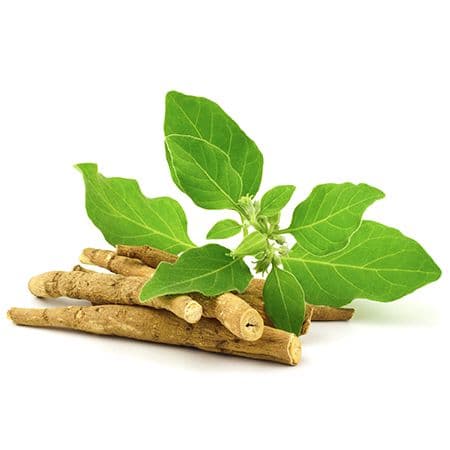Bladder Pain Syndrome
What Is Bladder Pain Syndrome?
Bladder Pain Syndrome (BPS) is a chronic condition characterized by pain or discomfort in the bladder and pelvic area, often accompanied by a frequent and urgent need to urinate. Unlike urinary tract infections (UTIs), BPS doesn’t result from bacterial infections, and there is no clear sign of infection in the bladder. The pain and discomfort can vary from mild to severe, and in some cases, BPS may lead to reduced bladder capacity due to inflammation and irritation.
BPS is more common in women than men and can affect people of all ages. The symptoms often fluctuate, with some experiencing flare-ups and remissions. This unpredictability can make it difficult to manage, but lifestyle changes and natural remedies can provide relief.
Symptoms of Bladder Pain Syndrome
The symptoms of Bladder Pain Syndrome can vary in severity and may worsen during flare-ups. Common symptoms include:
- Pain or discomfort in the bladder or pelvic region: This can range from mild discomfort to severe, cramping pain. The pain often increases as the bladder fills and may ease after urination.
- Frequent urination: Many people with BPD feel the need to urinate frequently, sometimes more than 8-10 times per day, even during the night (nocturia).
- Urgent need to urinate: There is often a strong and sudden urge to urinate, even if the bladder isn’t full.
- Pain during intercourse: Some individuals may experience discomfort or pain during sexual activity due to pelvic or bladder pain.
- Pressure in the lower abdomen: Along with pain, individuals may feel a constant pressure or fullness in the pelvic area.
These symptoms can worsen due to stress, diet, or hormonal fluctuations, particularly in women during their menstrual cycles.
Causes of Bladder Pain Syndrome
The exact cause of Bladder Pain Syndrome is still unclear, but several factors are believed to contribute to its development. These include:
1. Bladder Lining Dysfunction
In people with BPS, the protective lining of the bladder (the glycosaminoglycan layer) may be damaged or compromised. This allows irritants in the urine to come into direct contact with the bladder wall, leading to inflammation, pain, and increased sensitivity.
2. Autoimmune Response
Some researchers believe that BPS may involve an autoimmune response, where the body’s immune system mistakenly attacks healthy bladder tissues. This autoimmune reaction can cause chronic inflammation and pain.
3. Hormonal Health and Connections
Hormonal changes appear to play a role in Bladder Pain Syndrome, particularly in women. Key hormonal connections include:
- Estrogen: BPS is more common in women, and symptoms often fluctuate with hormonal changes during the menstrual cycle, pregnancy, or menopause. During menopause, the decline in estrogen levels may weaken bladder tissue, exacerbating symptoms. Some women find their symptoms worsen just before or during menstruation, suggesting that hormonal changes may increase bladder sensitivity.
- Pregnancy: Some women experience relief from BPS symptoms during pregnancy due to changes in hormone levels, particularly increased progesterone and estrogen. However, symptoms may return or worsen after childbirth.
4. Nerve Dysfunction
BPS may also be linked to nerve dysfunction. Nerves in the bladder and pelvic area can become hypersensitive, leading to pain, discomfort, and frequent urges to urinate. This hypersensitivity could be the result of chronic inflammation or injury.
5. Dietary Irritants
Certain foods and beverages are known to irritate the bladder and may trigger or worsen BPS symptoms. Common bladder irritants include:
- Caffeinated drinks (coffee, tea, soda)
- Alcohol
- Spicy foods
- Acidic fruits (such as citrus fruits)
- Artificial sweeteners
6. Stress and Emotional Health
Chronic stress can worsen BPS symptoms by increasing muscle tension and inflammation in the pelvic region. Stress may also contribute to flare-ups, making symptoms more severe during periods of heightened emotional distress.
Natural Ways to Manage Bladder Pain Syndrome
Managing BPS often involves a combination of lifestyle changes, diet modifications, and natural remedies to reduce pain and bladder irritation. Here are several natural strategies to help manage Bladder Pain Syndrome:
1. Dietary Modifications
Adjusting your diet is one of the most effective ways to manage BPS symptoms. Certain foods and beverages can irritate the bladder, so identifying and avoiding these triggers is key to reducing symptoms. Some common bladder irritants to avoid include:
- Caffeine: Coffee, tea, and energy drinks can overstimulate the bladder and worsen urgency.
- Alcohol: Alcohol can irritate the bladder lining and increase urination frequency.
- Spicy and acidic foods: Spices, tomatoes, citrus fruits, and vinegar may exacerbate bladder pain.
- Artificial sweeteners: Some artificial sweeteners, like aspartame, can irritate the bladder.
Instead, focus on a bladder-friendly diet that includes non-acidic fruits, whole grains, lean proteins, and plenty of water to stay hydrated.
2. Pelvic Floor Exercises (Kegels)
Strengthening the pelvic floor muscles can help reduce pain and improve bladder control in individuals with BPS. Kegel exercises, which involve contracting and relaxing the pelvic muscles, can help reduce bladder pressure and improve overall bladder health.
To perform Kegel exercises:
- Tighten the muscles you would use to stop urination.
- Hold the contraction for 5-10 seconds, then relax.
- Repeat 10-15 times, three times a day.
3. Herbs and Natural Supplements for Bladder Health
Several herbs and natural supplements may help soothe bladder irritation, reduce inflammation, and promote overall bladder health. Some effective options include:
- Quercetin: Quercetin is a natural flavonoid with anti-inflammatory properties that may help reduce bladder inflammation in BPS.
- Aloe Vera: Aloe vera has soothing and anti-inflammatory effects that can help heal the bladder lining and reduce irritation. Aloe vera supplements or juice are often used to manage BPS symptoms.
- Marshmallow root: Marshmallow root has mucilage, a gel-like substance that can coat and protect the bladder lining, reducing irritation and discomfort.
- D-Mannose: A naturally occurring sugar, D-Mannose can help prevent urinary tract infections, which may worsen BPS symptoms.
4. Stress Management and Relaxation Techniques
Since stress can exacerbate BPS symptoms, managing stress is crucial for symptom relief. Practicing relaxation techniques can help reduce bladder tension and pain. Some effective stress-relief strategies include:
- Mindfulness meditation: Mindfulness can help calm the nervous system and reduce the perception of pain.
- Yoga: Gentle yoga stretches can relieve pelvic tension and promote relaxation, reducing bladder discomfort.
- Deep breathing exercises: Practicing deep breathing can help lower stress levels and relax the muscles in the pelvic region.
5. Heat Therapy
Applying heat to the pelvic area can help relax the muscles and reduce bladder pain. Use a heating pad or take a warm bath to soothe the bladder and ease discomfort during flare-ups
Conclusion
Bladder Pain Syndrome is a chronic condition that can cause discomfort, pain, and frequent urination. Although the exact cause of BPS is unknown, factors such as bladder lining dysfunction, nerve hypersensitivity, and hormonal changes likely contribute to the condition. Managing BPS involves a combination of dietary changes, pelvic floor exercises, natural remedies like quercetin and aloe vera, and stress-relief techniques. By understanding the triggers and implementing these strategies, individuals with BPS can find relief and improve their quality of life.



